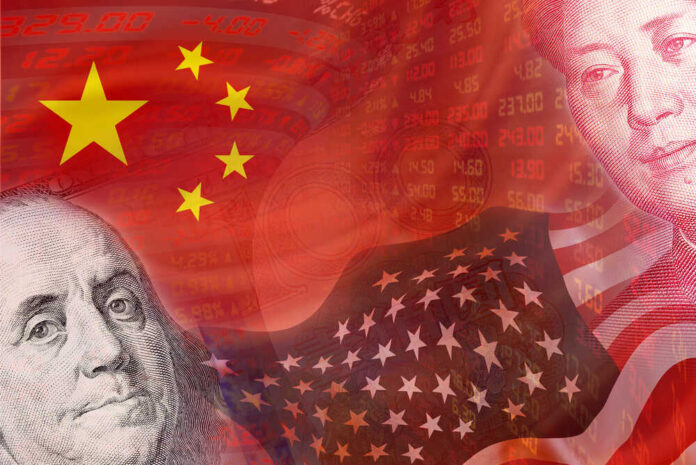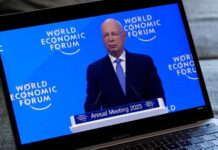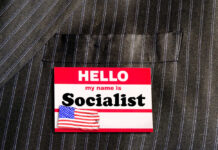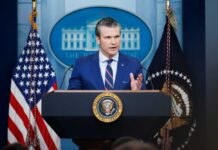
As China slaps a 34% tariff on American goods, the global markets lose $5 trillion in value while Trump declares “CHINA PLAYED IT WRONG, THEY PANICKED!”
At a Glance
- China retaliated against Trump’s “Liberation Day” tariffs with matching 34% tariffs on US imports
- Global stock markets have suffered a $5 trillion selloff, with the S&P 500 seeing its worst trading stretch since March 2020
- JP Morgan increased the likelihood of a global recession to 60% by year-end
- Trump urged the Federal Reserve to cut interest rates while China filed a formal WTO complaint
- China added 11 US firms to its “unreliable entities list” and 16 US entities to its export control list
China’s “Eye for an Eye” Response
In a move that surprised absolutely no one with a basic understanding of international relations, China has responded to President Trump’s “Liberation Day” tariffs with a matching 34% tariff on all American imports. This decision comes after Trump imposed his own 34% tariff on Chinese goods, effectively increasing the total levy to a whopping 54%. The Chinese Ministry of Finance didn’t mince words, accusing the United States of violating international trade rules and engaging in what they called “unilateral bullying practices.” It’s almost as if China doesn’t appreciate being pushed around by American economic policy. Who would have thought?
China’s retaliation didn’t stop at matching tariffs. They’ve also added 11 American firms to their “unreliable entities list” and placed 16 US entities on their export control list. Additionally, they filed a formal complaint against the United States with the World Trade Organization. Beijing urged Washington to cancel its tariffs and resolve trade differences through consultation, which seems like a perfectly reasonable request in a world where reason still mattered. But in this high-stakes economic chess game, neither side appears willing to back down first.
🇨🇳 China steps up trade actions:
1️⃣Suspends export qualifications of 6 US firms
2️⃣Bans dual-use exports to 16 US entities
3️⃣Adds 11 US firms to unreliable entity list
4️⃣Launches anti-dumping probe into CT tubes from US & India
5️⃣Begins industrial competitiveness review of… https://t.co/Y6m2cDU7jL— Shanghai Daily (@shanghaidaily) April 4, 2025
Markets in Freefall
As the two economic superpowers duke it out, the rest of the world is feeling the pain. Global stock markets have experienced a massive sell-off, wiping nearly $5 trillion in value off the board. The UK’s FTSE 100 index suffered its worst trading week since February 2020, while in the US, the Nasdaq has entered bear market territory. The S&P 500 is experiencing its worst trading stretch since the pandemic panic of March 2020. It’s almost as if actions have consequences in a globally interconnected economy.
Oil prices have also taken a nosedive, with Brent crude down 7%. Investors are rightfully concerned that higher prices resulting from tariffs will reduce consumer demand and significantly impact export-dependent economies. JP Morgan has increased the likelihood of a global recession to 60% by year-end. But hey, at least we’re all going down together in this economic game of chicken, right? The Federal Reserve has already warned of higher inflation and slower growth due to the escalating trade war, but apparently, that’s a price worth paying.
Today, April 2, President Trump added another 34% tariff on imports from China.
This is in addition to the 10% on February 4, the 10% on March 4, and the substantial increase during Trump 1.0.
Starting April 5, the average US tariff on imports from China will be 76%. https://t.co/WxpMBdh4Lx pic.twitter.com/cdSxqmzCgd
— Chad P. Bown (@ChadBown) April 2, 2025
Trump’s Bullish Response
Never one to back down from a fight, President Trump has responded to the market chaos with his characteristic all-caps social media posts. “CHINA PLAYED IT WRONG, THEY PANICKED – THE ONE THING THEY CANNOT AFFORD TO DO!” he declared, presumably while watching the markets plummet. Trump also took the opportunity to pressure Federal Reserve Chair Jerome Powell, demanding “CUT INTEREST RATES, JEROME, AND STOP PLAYING POLITICS!” Because nothing says “free market capitalism” like pressuring your central bank to bail out your policy decisions.
US Secretary of State Marco Rubio suggested that the market chaos was actually part of a grand plan to reshape the American economy. That’s an interesting way of saying “we didn’t think this through completely.” Trump’s unpredictability continues to add to market uncertainty, with mixed messages about tariff negotiations. Meanwhile, the UK is desperately negotiating with the US to lift a 10% levy on UK exports, offering concessions like reducing their digital services tax. Nothing says “special relationship” quite like economic blackmail.
What Comes Next?
As the dust settles on this latest round of economic warfare, the question remains: what happens next? The IMF has called for a constructive resolution to trade tensions, but with both sides digging in their heels, a quick resolution seems unlikely. Financial markets are anticipating further interest rate cuts from central banks worldwide as they attempt to mitigate the damage from this escalating trade war. Meanwhile, consumers and businesses in both countries will bear the brunt of these decisions through higher prices and disrupted supply chains.
The irony here is that tariffs rarely achieve their intended goals. They’re political tools masquerading as economic policy, and history has repeatedly shown they usually harm both sides. But in an era where scoring political points often takes precedence over sound economic policy, we shouldn’t be surprised when leaders choose the path of maximum confrontation over pragmatic solutions. For now, the global economy holds its breath as two economic giants engage in a game of chicken that no one can truly win.



























